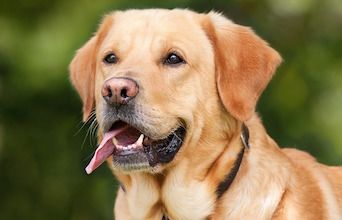Tips for Managing Osteoarthritis in Dogs
Owner education, early screening for orthopedic disease, and proper management—including weight loss and exercise—are key to improving comfort and outcome in animals with osteoarthritis.

Early diagnosis and proactive measures can improve long-term pain management in dogs with osteoarthritis (OA), said Denis Marcellin-Little, DEDV, DACVS, DECVS, professor of orthopedic surgery at North Carolina State University College of Veterinary Medicine, at a forum in Raleigh in February.
“Orthopedic problems in dogs are very common, but they often fly under the radar for years before they get identified,” he said. Dr. Marcellin-Little advised veterinarians to educate owners, identify orthopedic problems early, and optimize dogs’ weight and activity levels.
Owner Education
Dog owners may have some misconceptions about canine OA, said Dr. Marcellin-Little. He discussed several points to clarify with clients:
- Feeding puppies ad libitum to promote fast growth is detrimental. Rapid growth promotes the expression of genes that code for developmental orthopedic diseases. Puppies that carry these genes are more likely to have orthopedic problems if they grow quickly. Restricting their food intake to about 75% of the amount they would eat ad libitum will not affect their adult size but will reduce their risk for these diseases.
- Calcium supplementation (beyond the level included in commercial puppy diets) can also be damaging by promoting the expression of faulty genes.
- OA is not just a disease of old dogs. Developmental orthopedic diseases often begin at a young age. In some cases, early correction can change the course of the disease. Left untreated, an abnormality becomes irreversible after a few weeks or months.
- The right kind of exercise benefits dogs with OA. “There are very few things in orthopedics that make you feel better and function better and don’t cost a fortune,” said Dr. Marcellin-Little. He noted that leaving dogs unsupervised in a fenced yard does not count as exercise.
- Weight control depends on optimal nutrition. Exercise alone (without dietary modification) is not sufficient to reduce and maintain a dog’s weight.
Early Assessment
Early screening is important because orthopedic diseases are so common, said Dr. Marcellin-Little. He presented a table showing the 50 breeds with the highest prevalences of hip dysplasia, elbow dysplasia, and patellar luxation, compiled from Orthopedic Foundation for Animals screening data. Overall, 21.6% of the screened animals had hip dysplasia, 16.1% had elbow dysplasia, and 6.4% had patellar luxation. Three breeds were among the top 50 for all 3 diseases: bulldogs, pugs, and chow chows. The prevalence of hip dysplasia among screened bulldogs was 71.8% (among pugs, 70.3%). Fourteen terrier breeds were in the top 50 list for patellar luxation.
Early assessment (like PennHIP testing in 4-month-old puppies) is ideal, he said. Owner observations, clinic observations, and palpation are also helpful. For example, a dog resting with a forelimb curled under the chest (rather than extended in front) is likely to have elbow or carpal pain.
Management
Weight Management
Weight optimization is an extremely effective treatment for OA, he said, citing a study in which a 6% weight loss improved OA symptoms. Dr. Marcellin-Little referred to weight optimization (avoiding an excessive growth rate in puppies and maintaining lean weight in adults) as “the most effective lifelong strategy” for dogs with OA.
Activity
As in humans, exercise benefits dogs with OA. Exercise can be either land based or aquatic.
Pain Relief
Nonsteroidal anti-inflammatory drugs are crucial because many orthopedic diseases are managed rather than cured, said Dr. Marcellin-Little. He recommended using them not as sole therapy but as part of a management program that includes weight optimization and owner education.
Surgery
In growing puppies, a few surgical operations—such as pubic symphysiodesis for hip instability and distal segmental ulnar ostectomy for elbow dysplasia—can positively affect the course of orthopedic disease. However, the value of most orthopedic operations (other than fracture repair) is less clear, he said.
Summary
Dr. Marcellin-Little concluded by recommending a more proactive approach for dogs with OA. He suggested shifting the emphasis to educating clients and controlling dogs’ weight and exercise levels.
Dr. Laurie Anne Walden received her doctorate in veterinary medicine from North Carolina State University. After an internship in small animal medicine and surgery at Auburn University, she returned to North Carolina, where she has been in small animal primary care practice for over 20 years. Dr. Walden is also a board-certified editor in the life sciences and owner of Walden Medical Writing, LLC. She works as a full-time freelance medical writer and editor and continues to see patients a few days each